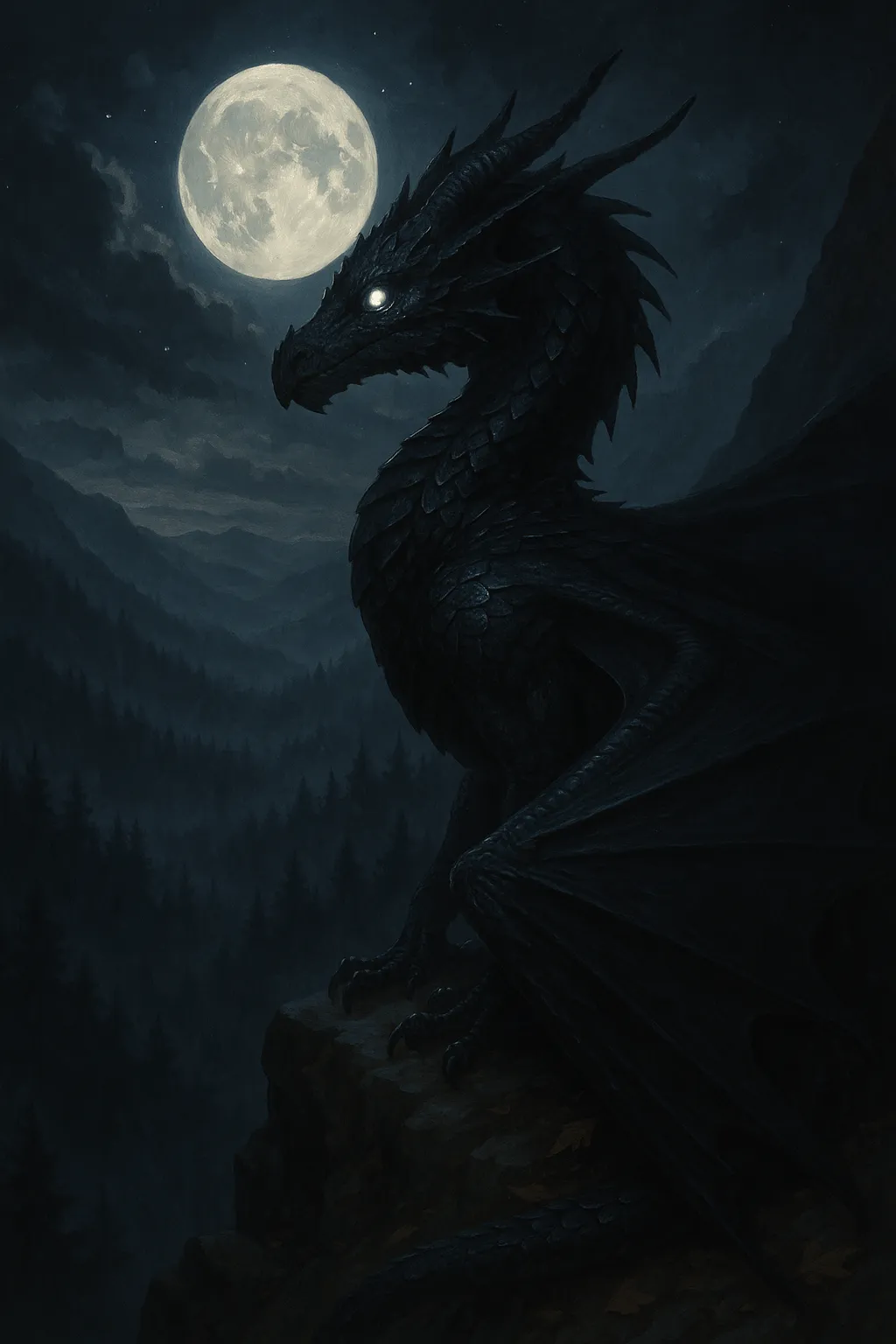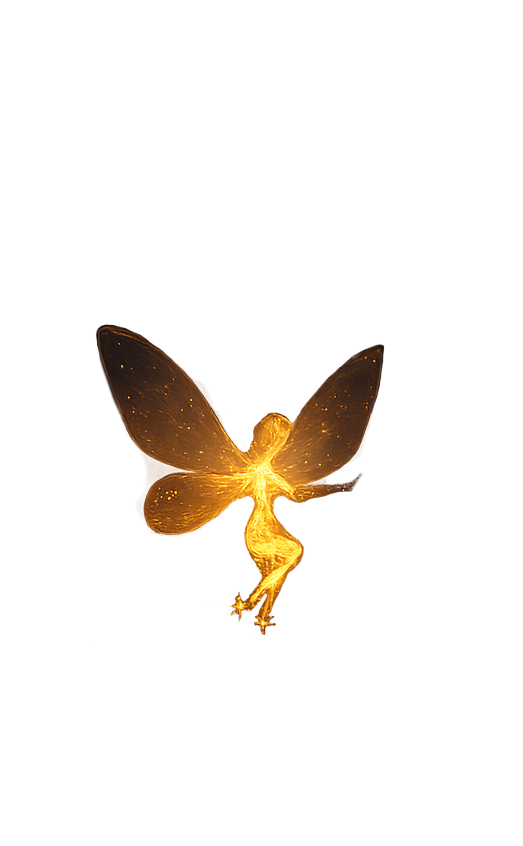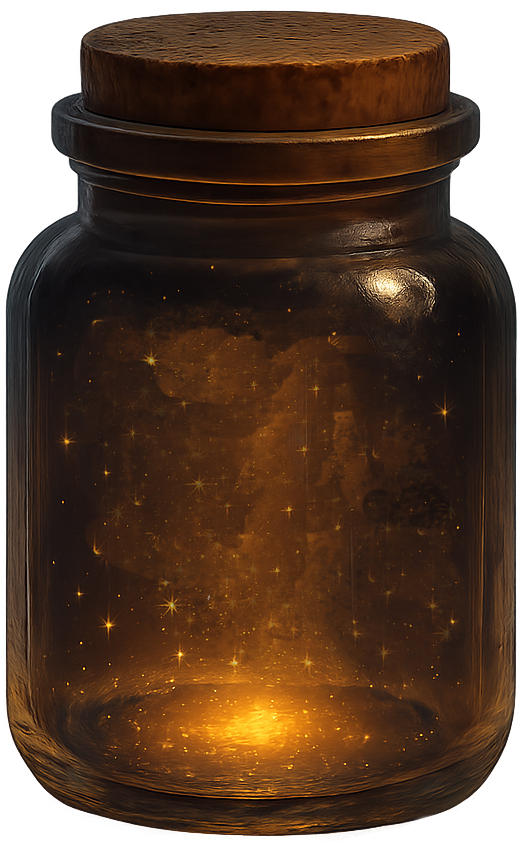
Every mimicked sound and voice, learned from an unfortunate soul.
Among the darkened peaks and wooded ranges of the world’s tallest mountains dwells a creature that has earned both reverence and fear: the Scale Singer. Cloaked in shadow and song, this nocturnal dragon is rarely seen—only heard. Its calls echo across ridgelines in strange choruses: the rustle of deer, the cry of an owl, the crackle of branches underfoot, or the distant murmur of human voices. Travelers who follow such sounds seldom return with certainty as to what misled them.
 The Scale Singer does not roar. It mimics. This act is neither magical nor enchanted, but deeply biological—its vocal range and musculature are so precise that it can replicate nearly any acoustic pattern it has observed. The purpose is simple: deception. A solitary hunter, the dragon uses mimicry to draw prey out of hiding or to herd creatures toward more favorable ambush points along narrow cliffs and rocky passes. Even experienced woodsmen have reported hearing familiar voices from childhood, only to realize no one else had followed them into the night.
The Scale Singer does not roar. It mimics. This act is neither magical nor enchanted, but deeply biological—its vocal range and musculature are so precise that it can replicate nearly any acoustic pattern it has observed. The purpose is simple: deception. A solitary hunter, the dragon uses mimicry to draw prey out of hiding or to herd creatures toward more favorable ambush points along narrow cliffs and rocky passes. Even experienced woodsmen have reported hearing familiar voices from childhood, only to realize no one else had followed them into the night.
 Despite its eerie tactics, the Scale Singer is not inherently malevolent. It behaves not out of cruelty, but instinct. It does not toy with its prey for sport; it hunts with strategy honed by nature and time. Those few who have studied the species up close—typically from a distance or through posthumous accounts—describe a sleek, scaled body with dark, glinting armor and wings adapted for silent gliding. The eyes of a Scale Singer reflect even the faintest light, giving rise to local legends of “moonfire eyes” glowing between the trees.
Despite its eerie tactics, the Scale Singer is not inherently malevolent. It behaves not out of cruelty, but instinct. It does not toy with its prey for sport; it hunts with strategy honed by nature and time. Those few who have studied the species up close—typically from a distance or through posthumous accounts—describe a sleek, scaled body with dark, glinting armor and wings adapted for silent gliding. The eyes of a Scale Singer reflect even the faintest light, giving rise to local legends of “moonfire eyes” glowing between the trees.
 Curiously, Scale Singers appear to have an affinity for objects that reflect moonlight. Their cavern hoards are said to be filled not with gold, but with silver, crystal, polished bone, and glass—anything that catches the pale light of night. This aesthetic preference has led to myths of a lunar bond, though no arcane or natural evidence suggests any true connection. Still, their behavior is consistent: they hoard beauty not value, shimmer not shine.
Curiously, Scale Singers appear to have an affinity for objects that reflect moonlight. Their cavern hoards are said to be filled not with gold, but with silver, crystal, polished bone, and glass—anything that catches the pale light of night. This aesthetic preference has led to myths of a lunar bond, though no arcane or natural evidence suggests any true connection. Still, their behavior is consistent: they hoard beauty not value, shimmer not shine.
 Attempts to locate or map their lairs have mostly failed. The entrances are often found high along mountain cliffs, partially concealed by dense forest or natural overhangs. Inside, reports speak of narrow stone ledges, carved tunnels, and chambers ringed with reflective treasures arranged in deliberate patterns—some suggestive of unknown meaning or ritual, others simply aesthetic.
Attempts to locate or map their lairs have mostly failed. The entrances are often found high along mountain cliffs, partially concealed by dense forest or natural overhangs. Inside, reports speak of narrow stone ledges, carved tunnels, and chambers ringed with reflective treasures arranged in deliberate patterns—some suggestive of unknown meaning or ritual, others simply aesthetic.
 While rarely engaging with humans directly, a Scale Singer will defend its territory with frightening precision. It uses its mimicry not only to stalk prey, but to unsettle threats—repeating the sound of approaching footsteps, shifting rocks, or even the voice of a companion warning you to run. And when it does strike, it does so from above or behind, never announcing itself in true form until too late.
While rarely engaging with humans directly, a Scale Singer will defend its territory with frightening precision. It uses its mimicry not only to stalk prey, but to unsettle threats—repeating the sound of approaching footsteps, shifting rocks, or even the voice of a companion warning you to run. And when it does strike, it does so from above or behind, never announcing itself in true form until too late.
Despite its danger, it is not counted among the cursed or wicked. Scholars categorize it simply as one of nature’s perfected predators—intelligent, solitary, and deeply tied to the rhythm of its nocturnal world. A Scale Singer is not a monster to slay, but a dragon to understand… from a safe distance.
The following magical heirlooms are fictional and lore-based in nature. Each one is an affiliate link to a real-world item on Amazon that we've hand-selected to complement this artifact's lore.


If you click a link and buy an item, we may earn a commission.It costs you nothing extra, but can help keep this little corner of the internet glowing.
What does this mean?
Unlocked, unguarded and overflowing with treasure...

The latest in state-of-the-art night-time vision.

Caw forth your new allies after learning the proper lingo. Brought to you by cawsmic forces, totally not a bird LLC.

A polished void-orb that reflects no light of this world, murmuring forgotten names to any who dare glimpse their own shadow within its sheen.




